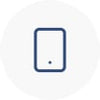Estonia

To official flag proportion of this flag is 7:11, or in centimeters, 105 x 165 cm's. Adopted officially back in the year '18, the flag is called blue black white, after the tricolor colors, by the folks of Estonia. Interestingly, the naval ensign is different from the other variations; this also applies to the banner used by the President of the republic.
Specific flags days in the Republic of Estonia are determined and specified by law. The first day of the year is January 3rd, which is the day of commemoration of the war of independence fighters of the country. Another day is May 9th, also referred to as "Europe Day." The national flag day is June 4th, which is called (not surprisingly) "National Flag Day."
Some years ago the Estonian military deployed some three hundred armed forces in different countries abroad as part of various internationally organized peace-keeping forces. These countries include Afghanistan, Iraq and Israel, specifically in the area of the Golan Heights.
Historic flags and banners of all kinds have been displayed from building and non building type constructions and objects, including residential flagpoles, throughout the world. Estonia's history had periods of time when the flag was not displayed. During the Russian occupation during the forties, the flag was actually banned from being hoisted. It was taken down from the most symbolic location in Estonia, the tower of "Pikk Hermann," which is located in the capital of the country.
The national flag of Estonia is available in different fabrics and sizes.


